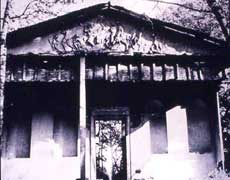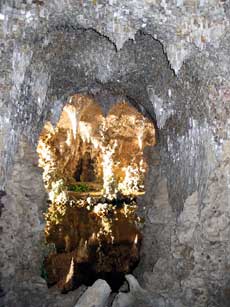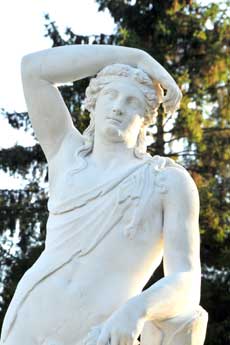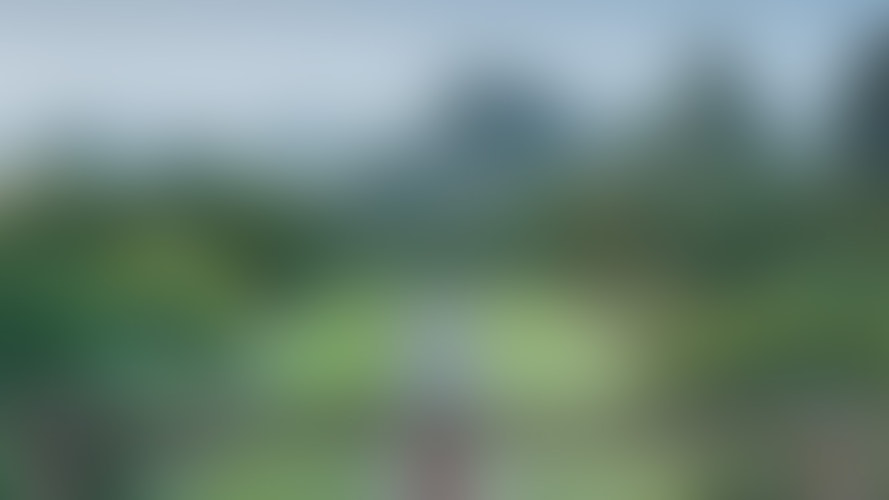Having worked to achieve a balanced trading account over the past few years, Mike is now confident that the Trust is in a position to move forward once again with fundraising for more restoration.
A high priority is the Temple of Bacchus, followed by the five-arched bridge, although it is much harder to get funding for these features, as they will be reconstructions of what was once there rather than restorations of features where a certain amount of the original building or its materials still exist.
‘The completed picture of Painshill must include these missing follies, but while we have the foundations, we don't have the superstructure, which means that any work we do is looked upon as a re-build rather than a restoration,' explains Mike.
The biggest single project still to be completed from the restoration's first phase - and of the highest priority - is the Grotto, combined with which will be the associated landscape of Grotto Island. Work on the Grotto is progressing slowly as funding allows.

The Temple of Bacchus, Painshill Park. Undated photograph, early 20th century. Copyright: Painshill Park Trust.
‘It is very expensive and takes a huge amount of time: you have to stick all these little crystals on, one by one, and there are millions of them! If only you could buy it on the roll at B&Q or spray it on like pebbledash,' laughs estates manager Mark Ebdon.
He thinks that the 18th-century grotto builders must have had techniques that have now been lost: ‘I think they had the secret of lightweight, rapid grotto buildings, like a stage set. Lane was probably supplying his grotto by the yard,' he muses.
A continuing issue for Mike is preventing the landscape's three ‘borrowed views' from being disfigured by phone masts. So far, he has been successful, but says that it is becoming increasingly difficult to get planners to understand the need to protect such historic views.
‘One has to be pragmatic - a couple of masts have gone up, but they were screened by trees and couldn't be seen from the park, so there's no point in fighting every battle - better to win the war!' he comments.
Also on Mike's wish list is the removal of another anachronism, the electricity pylons which march across the western end of the Painshill landscape. These could be re-routed underground but - as ever - the main issue is money.

The interior of the Grotto, Painshill Park. Copyright: Painshill Park Trust.
‘It is very expensive and takes a huge amount of time: you have to stick all these little crystals on, one by one, and there are millions of them! If only you could buy it on the roll at B&Q or spray it on like pebbledash!'
The return of Bacchus
A major excitement for the Painshill team was the rediscovery of the giant figure of Bacchus that once stood in the Temple of Bacchus, which overlooks the lake.
Bought by Hamilton's great-nephew William Beckford at a sale of Painshill's effects in 1797, the statue went first to Beckford's estate at Fonthill in Wiltshire, but after that it whereabouts for the next 200 years were unknown.
Painshill researchers traced the statue from Fonthill to Hafod near Aberystwyth and then to Ashridge in Hertfordshire before finally tracking it down at Anglesey Abbey near Cambridge, where it is in the care of the National Trust.
A replica of the statue now stands at the end of the bridge over the Mole, welcoming visitors. He will remain there until such time as the Temple of Bacchus is re-built and the statue can return to the home it left more than 300 years ago. We hope he will not have to wait too long.

The replica statue of Bacchus at Painshill. Photograph by Andy Newbold, July 2008. Copyright Andy Newbold.
